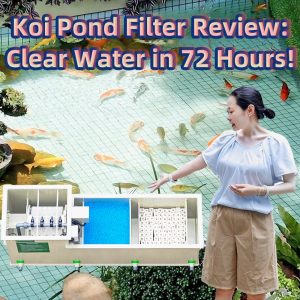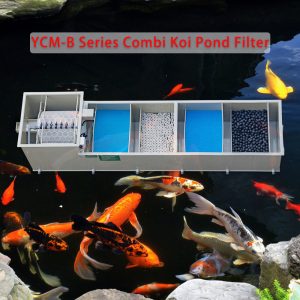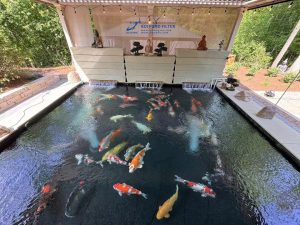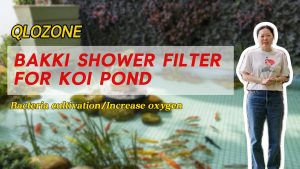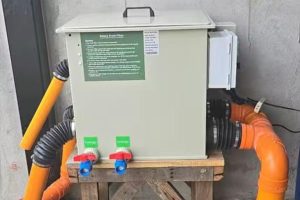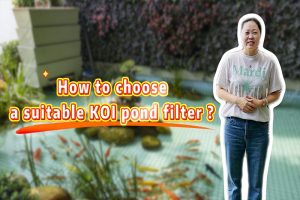Fish pond filtration systems are an integral part of maintaining clean water quality, ecological balance and fish health. When designing and configuring a fish tank filtration system, it is very important to choose the right flow introduction method. Two mainstream water intake methods include pumping water intake and gravity flow water intake. They have their own characteristics and applicable scenarios. The main differences between the two water intake methods will be compared in detail below.
Pumping water
Working Principle:
Pumping water refers to the process of actively pumping water in the fish pond by installing a pump, and then transporting it to the filtration system for purification and recycling back to the fish pond. This method relies on mechanical power to overcome pipe resistance and ensure the stability and continuity of water flow.
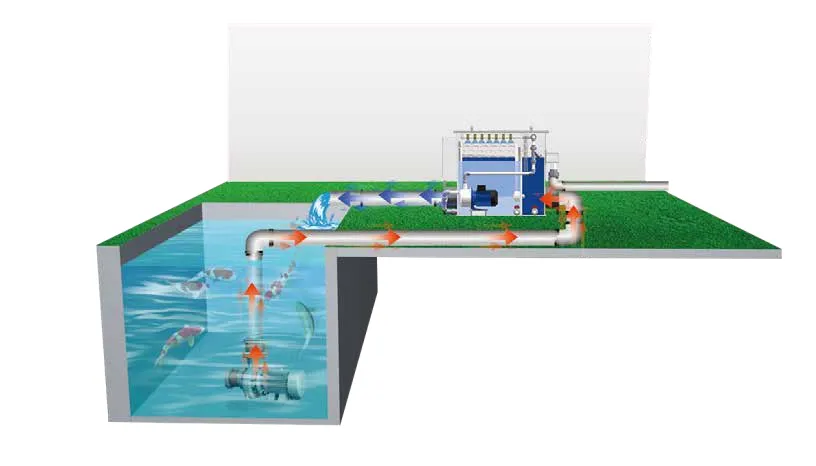
Characteristics and Advantages
Forced circulation: Pumping can ensure that a stable water flow can be maintained even in the case of unfavorable terrain or large changes in water level, ensuring that filtration efficiency is not affected.
High flexibility: suitable for a variety of terrains and complex layout of fish ponds, can adapt to different positions and heights of filtration equipment installation needs, improve the freedom of system layout.
Enhance the biological filtration effect: the higher water flow speed helps to improve the aeration effect of the biological filter material, promote the growth and reproduction of beneficial bacteria, and enhance the biological filtration ability.
Easy to automate control: easy to integrate automatic control systems, such as timing switches, water level sensors, etc., to achieve intelligent management, reduce the burden of manual maintenance.
Inadequacy
High energy consumption: Continuous operation of the pump will consume more electricity, increasing operating costs.
Noise problems: Some types of pumps will produce a certain amount of noise during operation, which may affect the tranquility of the surrounding environment.
Gravity artesian water
Working Principle:
Gravity artesian water is the use of the water’s own gravitational potential energy, no additional power source, the water in the fish pond natural drainage to the filtration system. This method is suitable for situations where there is a sufficient gap between the water source and the filtration equipment.
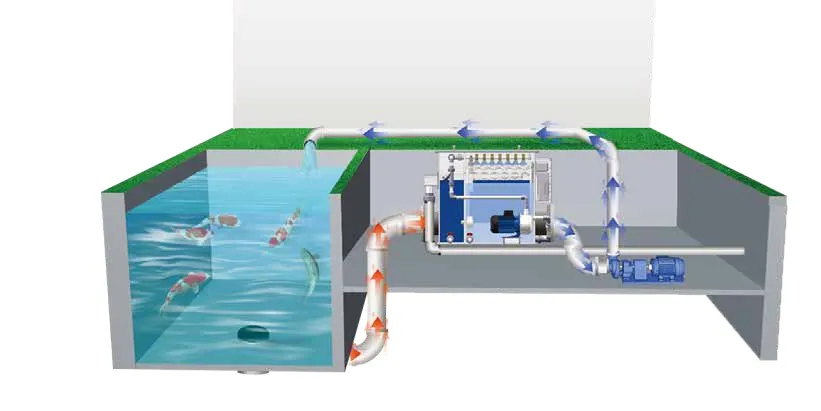
Characteristics and Advantages
Energy saving and high efficiency: Completely rely on natural forces to complete water transmission, greatly reducing energy consumption, is an environmentally friendly and economic choice.
Low noise: there is no running sound of mechanical equipment, creating a more peaceful and harmonious ecological environment.
Simple maintenance: The structure is relatively simple, the daily maintenance needs are low, and the maintenance cost and manpower investment are reduced.
Inadequacy
Limited by geographical conditions: there must be sufficient terrain slope to ensure sufficient water speed and pressure, otherwise it may affect the filtration effect.
Unstable flow: changes in water level will directly affect the amount of water flowing into the filtration system, which may fluctuate greatly in the rainy season or dry season, affecting the normal operation of the filtration system.
Difficult to automate: It is difficult to work with other automated control devices, such as automatic water refill systems or water quality monitoring devices, and may require additional manual intervention
Comprehensive consideration and selection suggestions
The choice between pumping or gravity feeding depends on the specific situation of the fish pond, budget constraints and personal preference. If the fish pond is located in a flat area or the filtration equipment needs to be installed above the water surface, it is recommended to use a pump to pump the water. On the contrary, if the surrounding terrain of the fish pond is favorable, and water flow can be formed naturally, then the gravity flow into the water will be a more economical and environmentally friendly choice. The ultimate goal is to create a healthy, beautiful and low-maintenance aquatic ecosystem that provides the most suitable living environment for ornamental fish.

